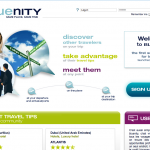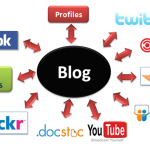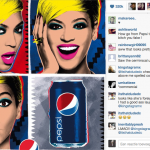TOP 7 Killer Marketing Tips To Win Over Generation C
It is no doubt that the new and emerging Generation C, digital natives and exceptionally tech-savvy population, creates new challenges for communication and technology industries. As a marketer, you have to be ready to abandon previously successful but outlived strategies and adapt to the new environment.

Here are TOP 7 most crucial things you have to know to fully understand, interact and engage with this diverse and growing population.
Generation C And What Should Marketers Know About It
As scholar Axel Bruns has explained, the ‘C’ stands for content and creativity. This new generation is characterized by increasing skills, abilities and enthusiasm to create and share content online, which at the same time indicates a decay of traditional industry models. The highly connected generation lives online, participates in social networks, and generates and consumes formerly private information. What is more important to marketers – Generation C are passionate consumers, enthusiastic early adopters and avid brand advocates that can become the most influential opinion formers about your brand.
Digital marketing expert Dan Pankraz has pointed to 5 key characteristics of Generation C – they love content creation; they tend to form communities; they stay informed and discuss on social media; they desire to be in control and work in more creative industries. Also, Google’s study has proven that the Generation C indeed are not passive consumers but can be seen as active and passionate brand advocates. They care about creation, curation, connection, and community. They shoot videos, create blog posts and reviews. For instance:
- 90% of them create online content at least monthly;
- Two-thirds tend to tell everyone about the brand they love;
- 76% visit YouTube weekly, 36% – daily;
- 56% have followed through after watching an ad on YouTube;
- Generation C is 1.8 times more likely to be influencers, admitting that people often ask them advice before making a purchase decision.
What is more, this is a group that has dismissed traditional advertising – 40% of Generation C watch hardly any TV, while 91% sleep next to their phones. Taking all of this into account, it’s clear that marketers should review their previous strategies and adapt to the new trends brought about by the Generation C. Here are 7 most essential tips you should consider to increase your brand’s success:
1. Deliver Your Best Each And Every Time
Generation C is known to withhold loyalty from all except brands that deliver consistently. For Generation C, the experience is everything so make sure you’re always up to your game. Remember, the consumers of Generation C trust each other and look to one another for recommendations. This means that making a lasting impression and ensuring flawless customer experience can turn into organic marketing. Here are a few tips on how to do exactly that:
- Your site cannot be clunky, confusing, crowded, or otherwise difficult to navigate. Ensure that you have eliminated the risk of slow loading pages or lost content and dead ends. Advanced URL shortening tools like Bitly, Goo.gl or Capsulink Smart links that shorten your links before publishing are helpful to manage link’s redirect rules and control where, when and under which circumstances the potential client will reach your link’s destination.
- Respond to customers as quickly as possible. While Frost reported that 41% of consumers surveyed listed being put on hold as their biggest frustration, 2017 Customer Service Benchmark Report shows that the average response time to handle a customer service request is 15 hours and 17 minutes. Being fast can become one of your most important advantages.
- Go the extra mile and do more than your competitors are willing to do. Take an example from Pizza Hut: when a loyal customer of their restaurants stopped placing his orders regularly, the Pizza Hut called him asking if he was okay and offered him a free complimentary “welcome back” pizza. He didn’t hesitate to share the story on Facebook, creating a powerful word of mouth.
2. Always Provide Value And Stand Out From The Crowd
Be sure to create and share content that provides value to your consumers instead of plain product promotions. Be educational, inspiring or funny. Don’t be scared to have an opinion and create content that stands for something. Take a view, react to real-time events and always look for opportunities to jump on to a topic that our customers care about. Take a look at the example from Tic Tac that created a strong response after Donald Trump mentioned the brand in an October surprise video. Their response got more RTs than their normal levels and even received more engagement than any tweet by Trump in the past 90 days.
Tic Tac respects all women. We find the recent statements and behavior completely inappropriate and unacceptable.
— Tic Tac USA (@TicTacUSA) October 8, 2016
3. Personalize Customer Experience
Now, brands have to create a meaningful experience for their customers and it starts with designing a more intuitive and efficient customer journey. Generation C, the connected customers, are hard to please. They’re mobile multitaskers and it influences also the customer journey they take. That’s why engaging with your customers and creating deep customer insights is the key. The traditional funnel of a linear path from awareness to action is outdated. It’s not enough to rely on Net Promoter Scores or Customer Satisfaction data alone. You should use customer intelligence to optimize their experiences. Here are some tools that can help:
- Mixpanel – measures actions such as searches or shares to gain greater insight into user behavior.
- IBM Social Analytics – analyzes and predicts customer behavior to create custom social media campaigns.
- Quantcast – provides audience insight through geographic and demographic data with additional information about interests and related website activity.
- Monetate – helps to turn real-time into relevant digital experiences by taking a snapshot of every visitor, creating multivariate tests and rules-based product recommendations, and more.
4. Embrace Mobility
Generation C is more mobile than any other generation, so if you’re not embracing mobile marketing, you will quickly fall behind your competition. To ensure a superior experience for your connected customers:
- Create responsive web design adjusted for any screen or device. Generation C customers have an attention span of mere seconds, so if your site reacts poorly to mobile devices, they will quickly turn away.
- Geo-localize ads to connect with your audience more precisely.
- Have your customers sign up for SMS alerts and ads to reach them anywhere.
For instance, company Toys “R” Us through its mobile registry app, has been able to lower cart abandonment by 25 %, while engagement has increased by 50 %.

Screenshot: Toysrus
5. Use Influencers, Experts, And Brand Advocates
To successfully meet the expectations of Generation C, optimize the brand message on social media and ensure transparency and credibility by:
- Engaging experts and opinion leaders in your marketing communication;
- Using company ambassadors (according to a study conducted by LinkedIn, employees get 2 times higher click-through rates from their shares compared to company shares of the same content);
- Collaborating with micro-influencers (according to a study from Markerly, on social media platforms like Instagram, when an influencer’s follower total rises, the rate of engagement (likes and comments) with followers decreases. The engagement ratio with micro-influencers (< 1 000 subscribers) is up to eight times higher than with the macro-influencers (> 1 000 000 subscribers)).
Adidas adopted micro-influencer strategy when it came to launching its Glitch football boot via an invite-only mobile sales channel. The boot was developed and tested in cooperation with a community of young football players and influencers. There were no big ads, the buzz was generated using social media and word of mouth. Instead of ‘big name’ influencers, they focused on young players that created Glitch content. As a result, players were begging for referral codes on social media, while the Glitch app gained more than 60,000 downloads in its first 6 months and codes seeded by ‘first influencers’ resulted in a 75% sale conversion rate.

Image source: Advertolog
6. Tell Real Stories And Embrace User-Generated Content
Ertimur and Gilly (2012) in their article So Whaddya Think? Consumers Create Ads and Other Consumers Critique Them have stressed that peer-to-peer culture and amateur work is highly credible, while traditional advertising has lost its credibility for a long time. Consumers do not trust companies and organizations, instead they choose user-generated content as the main source of information. Remember – Generation C prefers real people over products so you should be telling real stories with a human touch. The hard sell does not work with these customers—you need to connect with them on a personal level and convey true value rather than instant gratification.
Take some inspiration from the My Jeep Story campaign. To celebrate the 75th Anniversary of Jeep, they asked the Jeep owners and fans to share their favorite Jeep moments and stories on social media using #myjeepstory. Instead of hiring a professional author, the company let its customers do the job and tell their brand story.

Image source: Xsister
7. Become A Participatory Brand
Media scholar Henry Jenkins came up with a term participatory culture to point to the blurring line between the audience and producers. Participatory culture indicates the shift away from passive audience towards the world where consumers have become active participants in creation of brand related messages.
Participation Brand Index that measures return on involvement has named Apple the prime example of a participatory brand. 65% of respondents have felt that Apple makes them feel as part of a community, but 74% reveals that the brand talks to them personally. Amazon, Google and Netflix are among other strong examples of what it means to be a participatory brand that has a passionate purpose at heart, that not only responds to culture but actively shapes it, including their audience in content creation, conversations and experiences. For marketers embracing participatory culture means trusting the consumer and giving freedom to the audience. Take example from
Doritos Crash the Super Bowl contest that offered very few guidelines to the participants and didn’t alter the ads created by contest entrants.

Image source: Videocontestnews
About The Author
Alexander @Bickov is a Riga based product designer with over 15 years of UX design and digital marketing experience. In his work, he aims to connect people and products by using strategy, creativity and technology. Alexander has built digital services and products for organizations ranging from agencies, startups to large companies. His work is featured in the iOS App Store, Wall Street Journal, CNN, Business Insider, Forbes and Big Think.
Related Stories
Follow Category?Buzz & WOM |
Follow Author?Alexander Bickov |
4 more
Follow Tags?advertising campaignsbranding campaignscontent marketing strategyGeneration C |













